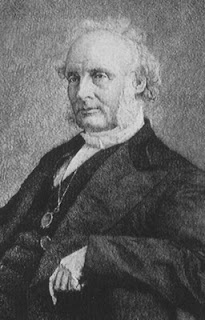Undergraduates Actually Want a Liberal Arts Education
Undergraduate students actually want a liberal arts education—when presented with the arguments for it. How do I know?
First, some background: this year the College of Arts & Sciences at Baylor University approved a unified core curriculum for all of its students, from physics majors to English majors. Like all human products, this specific core has its strengths and weaknesses. But I love working for an institution that values the liberal arts enough to require a large proportion of its students to take courses across a fairly broad range of subjects. In fact, several of the courses in the core are straight-up required—all students must take exactly those courses. The rest of the core consists of the more common “distribution list” system whereby students select courses from among several options in each area. After fulfilling the core requirements, A&S students complete their degree with a combination of electives and additional requirements for their particular major.
In the town hall faculty meetings leading up to finalizing the content of the core, I shared an exercise I have done with students four times now, stretching over nearly a decade. This exercise has yielded uniform and, to me, surprising results: undergraduate students really want a large liberal arts core curriculum. Let me explain.
Given my research interests, I like to work the history of higher education into my courses. It always proves popular because students rarely get it in their other classes and they find it so obviously relevant to their lives. I have managed to work this particular exercise into a course I taught once at Notre Dame on American reform movements and a course I have taught three times at Baylor on the Gilded Age and Progressive Era. Because of enrollment policies at both institutions, these classes all included a large number of students who were not history majors.
 |
| James McCosh |
In brief, McCosh defended a more traditional, largely required liberal arts curriculum by arguing that not all courses impart the same level of mental training and, human nature being what it is, most students would elect the easiest courses if given the opportunity. McCosh added that many students only discover their talent for and interest in a subject during a course they would never have elected to take. Finally, he asserted that full human development requires fostering several different types of mental capacities, and true education requires a certain breadth of knowledge about the world. Meanwhile, Eliot defended a “new departure” in college education by boldly arguing for an entirely elective curriculum. He argued that students enter college with exposure from high school to a wide variety of subjects and already know their tastes and talents. They would dedicate themselves more to classes that genuinely interest them, and would thereby better learn the sorts of reasoning skills that can be actually be gained through any number of widely varying courses. Simultaneously, they would thus better directly prepare themselves for work after graduation.
 |
| Charles William Eliot |
For RiAH’s readership, I should note a similar argument between these educators over collegiate religion. As I discuss in more detail in my book (along with their views on women's education!), McCosh defended requiring students to attend chapel—although you cannot make a horse drink, you have a moral obligation to lead him to water—whereas Eliot made chapel voluntary and sought to induce students to attend by filling the pulpit with a rotating supply of famous ministers.
In class, I assign students to teams and have them draw on McCosh’s and Eliot’s respective arguments to debate the nature of an ideal college curriculum. I then force students into an all-or-nothing choice—entirely required courses vs. entirely elective courses—and have them vote what they really think (as opposed to speaking for the side to which I had assigned them for the debate).
I have been asking students this question since Fall 2009 (with the most recent poll being Fall 2017) and the result always is the same. Every. Single. Time. Here it is:
50% vote for entirely required, and 50% vote for entirely elective. Let this sink in for a minute. Fully half of my students believe so strongly in the value of a robust liberal arts education that they are willing to give up all choice in the curriculum to get it. And the half that voted for an entirely elective curriculum does not actually find that forced choice ideal—they would prefer that some of the curriculum be required. After the initial vote, I let students choose between “greater than 50% required” vs. “around 15% required,” and it still comes out 50-50, although some students switch camps. It’s important to note we were debating requiring specific classes, not merely requiring selecting from distribution lists. So students were voting for greater than 50% of their curriculum being exactly defined.
Moral of the story: When they have a chance to think through the best arguments from educators of the past, students buy into the idea of a liberal arts core more than we think they do...even to the point where half of them don’t think 15% is enough and are willing to go with greater than 50% to get more. And even to the point where half of the them would recommend an entirely required college curriculum over one where nothing was required.
Although I am considerably more in favor of majors and electives than was McCosh, I believe that overall students benefit from a comparatively larger liberal arts core, for the reasons he advanced. It should be an encouragement to those of us who teach in what may be the ultimate humanities discipline—history—that when students hear those arguments, so many of them agree. We just need to share that history with them. Fortunately, that’s what we do well.

Comments